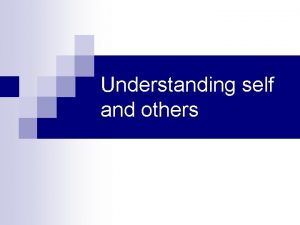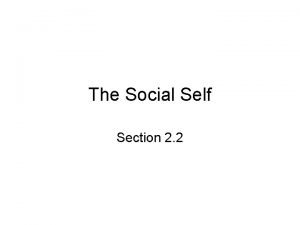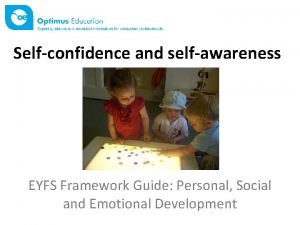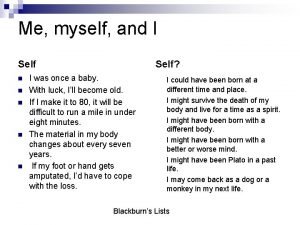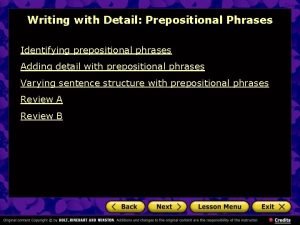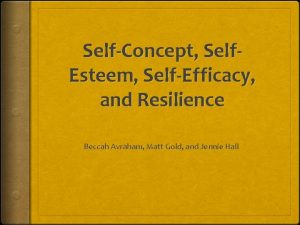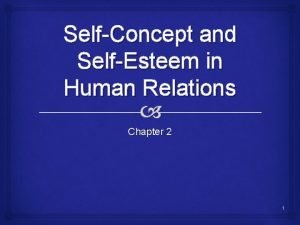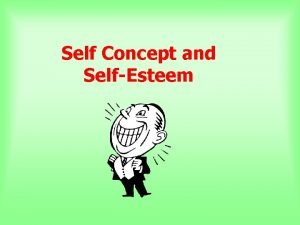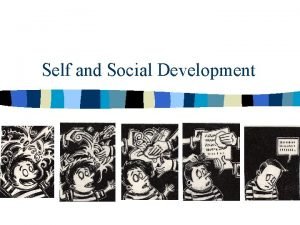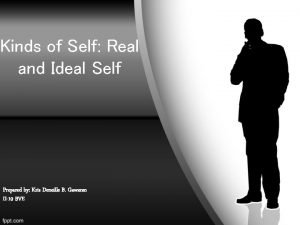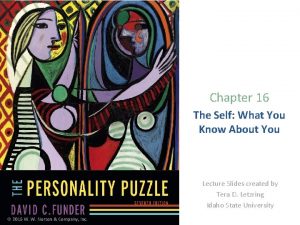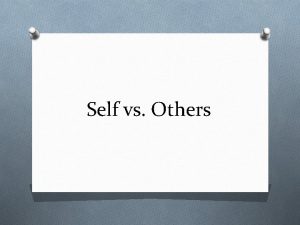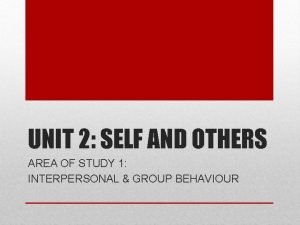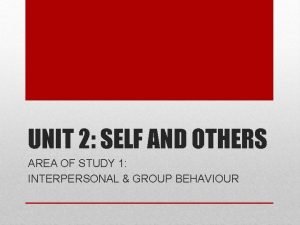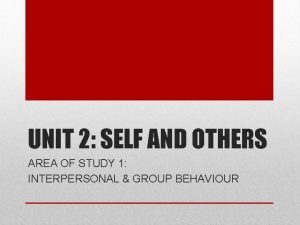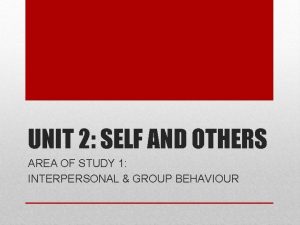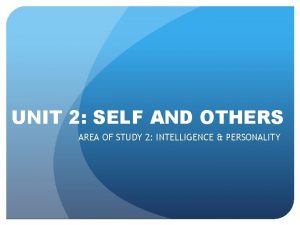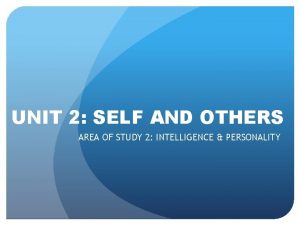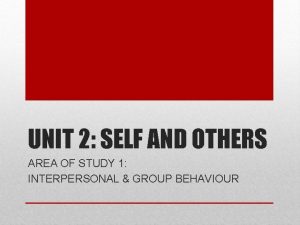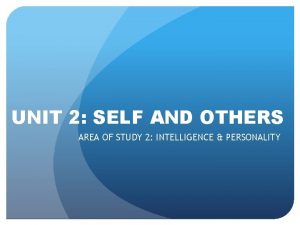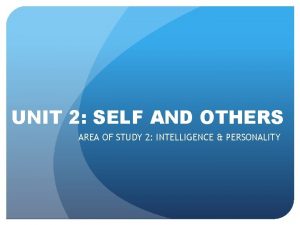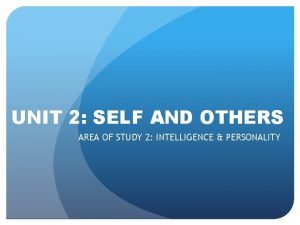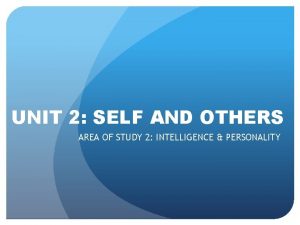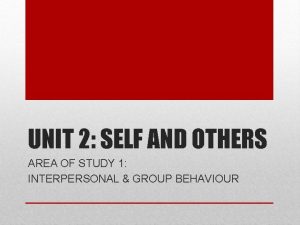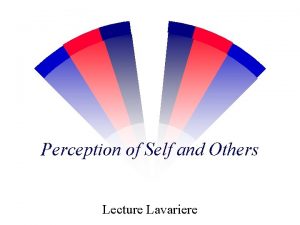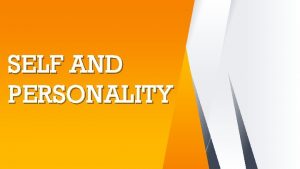UNIT 2 SELF AND OTHERS AREA OF STUDY





















- Slides: 21

UNIT 2: SELF AND OTHERS AREA OF STUDY 1: INTERPERSONAL & GROUP BEHAVIOUR

POSITIVE BEHAVIOUR = PRO-SOCIAL NEGATIVE BEHAVIOUR = ANTI-SOCIAL PRO-SOCIAL AND ANTI-SOCIAL BEHAVIOUR

PRO-SOCIAL BEHAVIOUR is all about the INTENTION of the behaviour, not the actual outcome If I mean to do well, then I am engaging in pro-social behaviour PRO-SOCIAL BEHAVIOUR

LEARNING ACTIVITY 10. 2 HOMEWORK (pg. 418)

FACTORS INFLUENCING PRO-SOCIAL BEHAVIOUR (Latane & Darley 1968) 1. Situational Factors . - Noticing the situation - Interpreting the situation - Taking responsibility for helping 2. Social Norms . - Reciprocity Norm - Social Responsibility Norm 3. Personal Factors . - Empathy - Mood - Competence PRO-SOCIAL BEHAVIOUR

1. SITUATIONAL FACTORS NOTICING THE SITUATION Research findings indicate that individuals on their own are quicker to notice something ‘different’ or unusual then when they are in a group This is just the first step though… FACTORS INFLUENCING PRO-SOCIAL BEHAVIOUR

1. SITUATIONAL FACTORS INTERPRETING THE SITUATION Situation less ambiguous = more likely to help Situation more ambiguous = less likely to help Leonard Bickman (1971) “Woman In Cubicle” CONDITION 1 CONDITION 2 CONDITION 3 ACCIDENT TYPE Certain emergency Certain nonemergency Uncertainty RESULT Help more frequently Help less frequently FACTORS INFLUENCING PRO-SOCIAL BEHAVIOUR

1. SITUATIONAL FACTORS INTERPRETING THE SITUATION Situation less ambiguous = more likely to help Situation more ambiguous = less likely to help Clark and Word (1972) “Maintenance Worker and the Ladder” CONDITION 1 CONDITION 2 ACCIDENT TYPE With verbal cues Without verbal cues RESULT 100% of participants helped 30% of participants helped FACTORS INFLUENCING PRO-SOCIAL BEHAVIOUR

1. SITUATIONAL FACTORS TAKING RESPONSIBILITY FOR HELPING Darley and Latane (1968) hypothesise that the presence of onlookers affected each individual’s sense of responsibility to take action Kitty Genovese (1964) – 38 people watched, 35 minutes passed, 1 person called the police, no-one came to her aid BYSTANDER EFFECT FACTORS INFLUENCING PRO-SOCIAL BEHAVIOUR

1. SITUATIONAL FACTORS TAKING RESPONSIBILITY FOR HELPING Latane and Dabbs (1975) “ Dropping in the Elevator” 175 confederates 1497 journeys CONDITION 1 CONDITION 2 Number of people 1 person 6 people Help given 40% of the time 20% of time FACTORS INFLUENCING PRO-SOCIAL BEHAVIOUR

LEARNING ACTIVITY 10. 3 HOMEWORK (pg. 421)

2. SOCIAL NORMS ‘Standards’ or ‘rules’ that govern what people should or should not do in certain social situations RECIPROCITY NORM An unwritten rule that we should give what we receive or expect to receive “You scratch my back and I’ll scratch yours” Sometimes people cannot reciprocate the help we give (eg. small children, elderly etc. ) so therefore the reason that we help is due to… FACTORS INFLUENCING PRO-SOCIAL BEHAVIOUR

2. SOCIAL NORMS SOCIAL RESPONSIBILITY NORM We should help those who need help because it is our responsibility or duty to do so (Meyer & Mulherin, 1980) We are more likely to follow the social responsibility norm when people are victims of circumstance (eg. fire, burglary, flood) If people have brought about their own misfortune, we are less likely to help, because we rationalise that they ‘deserve it’ FACTORS INFLUENCING PRO-SOCIAL BEHAVIOUR

LEARNING ACTIVITY 10. 5 HOMEWORK (pg. 424)

3. PERSONAL FACTORS EMPATHY The ability to identify with and understand another person’s feelings or difficulties Batson et al. (1997) • 40 male and female participants • Half hear empathy promoting story • Half do not hear empathy promoting story FACTORS INFLUENCING PRO-SOCIAL BEHAVIOUR

3. PERSONAL FACTORS EMPATHY The ability to identify with and understand another person’s feelings or difficulties Batson et al. (1981) • 44 female participants • Observe a female confederate receiving electric shocks • Female confederate tells experimenter and participant that shocks are painful and she suffered as a child • Experimenter then invites participant to change places with the confederate HOW MANY DO? FACTORS INFLUENCING PRO-SOCIAL BEHAVIOUR

3. PERSONAL FACTORS EMPATHY Batson et al. (1981) GROUP 1: are led to believe beforehand that they have a lot in common with confederate GROUP 2: are led to believe beforehand that they are quite different from the confederate FACTORS INFLUENCING PRO-SOCIAL BEHAVIOUR

3. PERSONAL FACTORS MOOD People are more likely to help when they feel good Isen, Clarke & Schwartz (1976) “Pass On My Phone Message” CONDITION 1 CONDITION 2 ACTION Told they would receive a free gift Not told they would receive a free gift RESULT 95% were prepared to pass on phone message 10% were prepared to pass on phone message FACTORS INFLUENCING PRO-SOCIAL BEHAVIOUR

3. PERSONAL FACTORS MOOD People are more likely to help when they feel good Thompson, Cowan & Rosenhan (1980) “Your Friend Has Cancer” • Participants told to imagine their friend has cancer CONDITION 1 CONDITION 2 ACTION Focus on how you are feeling Focus on how your friend is feeling RESULT AS ANONYMOUS HELPER 25% of participants volunteered to help 83% of participants volunteered to help FACTORS INFLUENCING PRO-SOCIAL BEHAVIOUR

3. PERSONAL FACTORS COMPETENCE People with skills or training that are relevant to a situation in which help is required are more likely to help Baron (1972) • Found that when the bystander knew they could relieve a person’s suffering, the greater the pain, the more quickly they responded • When the bystander believed they could not relieve a person’s suffering, the greater the pain, the slower they responded FACTORS INFLUENCING PRO-SOCIAL BEHAVIOUR

LEARNING ACTIVITY 10. 7 HOMEWORK (pg. 429)
 Differentiation of self
Differentiation of self Managing self and others
Managing self and others Slidetodoc.com
Slidetodoc.com I self and me self difference
I self and me self difference Self confidence and self awareness eyfs
Self confidence and self awareness eyfs Me myself and i self concept
Me myself and i self concept Unit 6 review questions
Unit 6 review questions Vary preposition
Vary preposition Self image vs self perception
Self image vs self perception Self concept vs self esteem
Self concept vs self esteem Self concept goals
Self concept goals Self concept vs self esteem
Self concept vs self esteem An idealized image that we have developed over time
An idealized image that we have developed over time Contoh ideal self dan real self
Contoh ideal self dan real self Procedural self
Procedural self Cobol area a and area b
Cobol area a and area b Cobol area a and area b
Cobol area a and area b Curved surface area and total surface area of cone
Curved surface area and total surface area of cone Cobol area a and area b
Cobol area a and area b Surface area of the prism
Surface area of the prism What is lateral area
What is lateral area Fish gastrulation
Fish gastrulation


